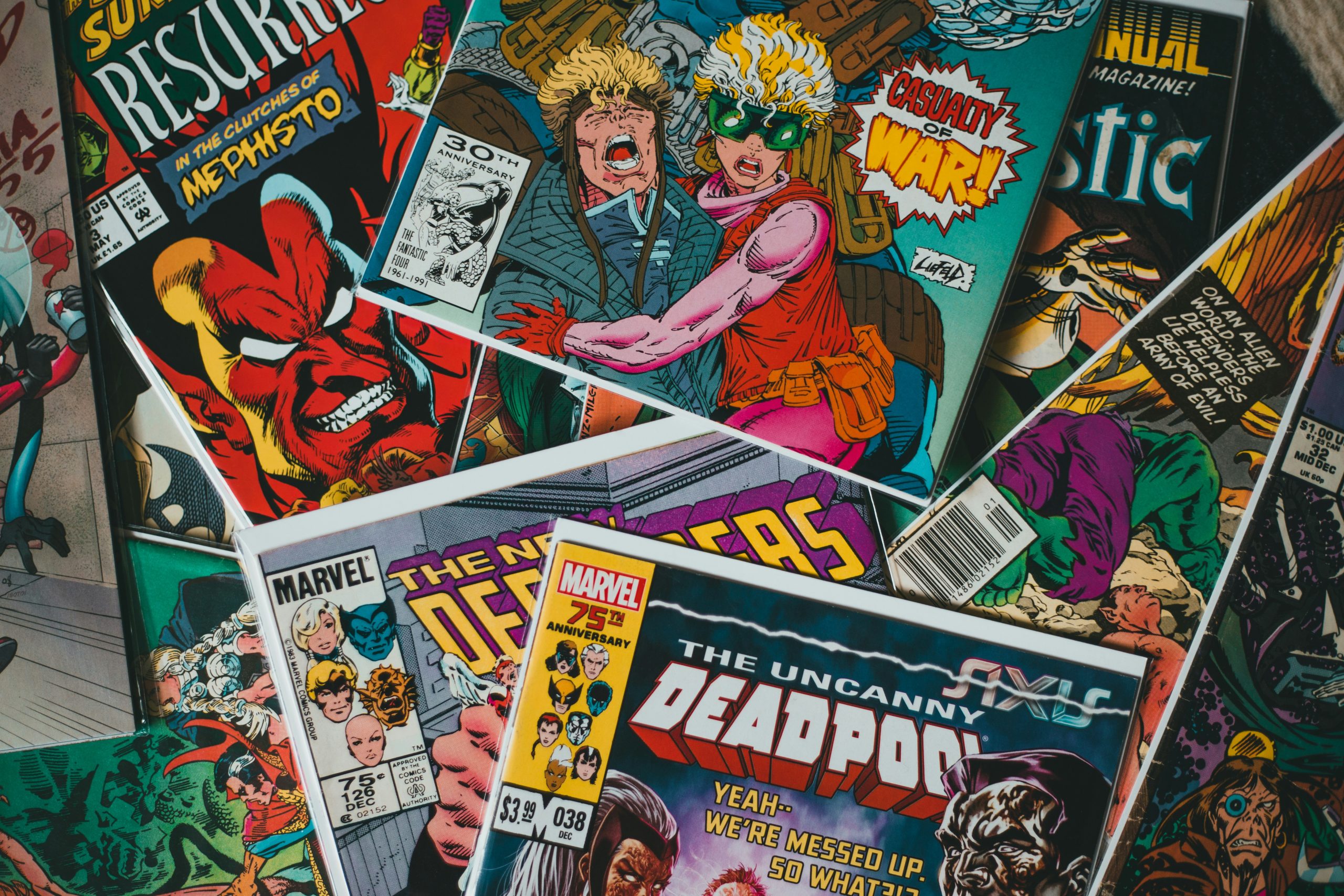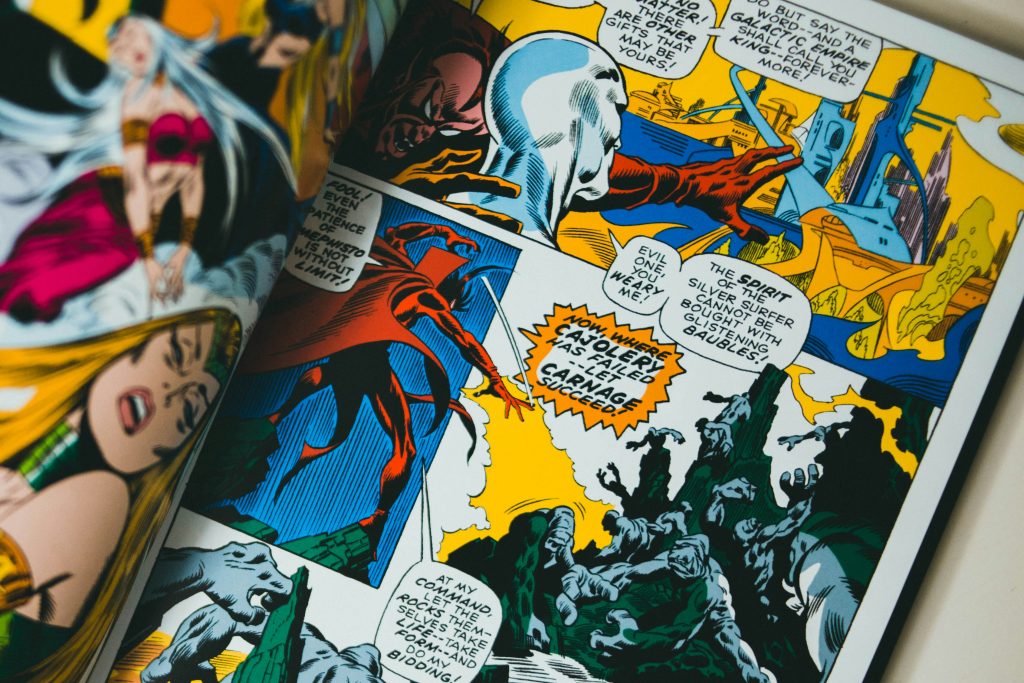The Comic Universe Uncovered: A Detailed Exploration of Sequential Art
Comics, with their unique blend of visual storytelling and narrative depth, have enthralled audiences worldwide for decades. This article embarks on a comprehensive exploration of the expansive world of comics, delving into their rich history, cultural significance, diverse genres, and ongoing evolution. Unraveling the Origins of Comics Ancient Beginnings The origins of comics can be traced back to ancient civilizations, where visual narratives were depicted on cave walls, scrolls, and pottery. These early forms of sequential art laid the foundation for the medium’s development, serving as precursors to the comics we know today. Emergence of Modern Comics The modern comic book as we recognize it began to take shape in the late 19th and early 20th centuries with the advent of mass printing technologies. Newspaper comic strips, featuring characters like “The Yellow Kid” and “Little Nemo in Slumberland,” gained popularity and paved the way for the comic book format. The publication of Action Comics #1 in 1938, featuring the debut of Superman, marked the dawn of the Golden Age of Comics and the rise of superhero storytelling. The Ever-Evolving World of Comics Golden Age of Superheroes The Golden Age of Comics (1930s-1950s) witnessed the emergence of iconic superheroes like Superman, Batman, and Wonder Woman. These characters captivated readers’ imaginations and became cultural icons, embodying the ideals of heroism, justice, and moral integrity during a tumultuous period in history. Silver Age and Beyond The Silver Age of Comics (1950s-1970s) ushered in a new era of innovation and creativity, with Marvel Comics leading the charge. The creation of characters like Spider-Man, the X-Men, and the Fantastic Four by Stan Lee, Jack Kirby, and Steve Ditko revolutionized the industry, introducing complex narratives, flawed heroes, and social commentary that resonated with readers. Cultural Significance of Comics Reflection of Society Comics serve as a reflection of society, offering insights into cultural norms, social issues, and political ideologies. From addressing themes of inequality and injustice to exploring the complexities of human nature and the pursuit of truth, comics provide a lens through which readers can examine and engage with the world around them. Educational Value Comics have also proven to be valuable educational tools, fostering literacy, critical thinking, and visual literacy skills in readers of all ages. Educational comics cover a wide range of subjects, from history and science to literature and mathematics, making learning engaging and accessible through the power of storytelling and visual imagery. Exploring Genre Diversity Superhero Sagas Superhero comics remain a cornerstone of the industry, captivating readers with tales of heroism, adventure, and epic battles between good and evil. From the larger-than-life exploits of Marvel and DC superheroes to the indie darlings and creator-owned properties, superhero comics continue to evolve and adapt to changing times while retaining their timeless appeal. Indie Gems and Alternative Voices Indie and alternative comics offer a diverse range of storytelling styles and perspectives outside the mainstream superhero genre. From intimate slice-of-life narratives and autobiographical accounts to experimental works and avant-garde expressions, indie comics celebrate individuality, creativity, and artistic freedom, pushing the boundaries of the medium and challenging readers’ expectations. Graphic Novels as Literary Treasures Graphic novels have emerged as literary treasures, blending the visual storytelling of comics with the narrative depth and complexity of traditional novels. These long-form works explore a myriad of themes, from personal memoirs and historical epics to social commentary and literary adaptations, garnering critical acclaim and broadening the audience for comics as a legitimate literary form. Global Impact of Comics Crossing Cultural Boundaries Comics transcend cultural and linguistic barriers, captivating readers around the world with their universal themes and visual storytelling. From Japanese manga and European bande dessinée to South American historietas and beyond, comics have become a global phenomenon, inspiring artists, writers, and readers across continents and cultures. Fostering Cultural Exchange Comics serve as catalysts for cultural exchange and dialogue, fostering understanding and appreciation of diverse perspectives and experiences. Collaborations between creators from different countries and the translation of comics into multiple languages have enriched the medium, allowing stories to resonate with audiences worldwide and promoting cross-cultural understanding and empathy. Facing Challenges and Embracing Opportunities Embracing Diversity and Inclusion The comic industry continues to grapple with issues of diversity, representation, and inclusivity, striving to create comics that reflect the rich tapestry of human experiences. Efforts to amplify marginalized voices, promote diverse creators and characters, and address systemic inequalities are essential for ensuring that comics remain inclusive and relevant in an increasingly diverse world. Navigating the Digital Landscape The rise of digital technology has transformed the comic industry, offering new opportunities for creators, publishers, and readers alike. Digital comics platforms, webcomics, and crowdfunding sites have democratized the medium, allowing independent creators to reach audiences directly and experiment with new formats and distribution models. Embracing digital innovation while addressing challenges such as piracy, accessibility, and monetization is crucial for the continued growth and sustainability of the comic industry. Looking Ahead to the Future Embracing Innovation The future of comics is brimming with potential, fueled by technological innovation, creative experimentation, and cultural exchange. Augmented reality, virtual reality, and interactive storytelling offer new avenues for engagement and immersion, while advances in digital distribution and print-on-demand technologies make comics more accessible and affordable than ever before. Celebrating Diversity and Creativity As comics continue to evolve and diversify, celebrating the rich tapestry of voices, perspectives, and storytelling styles that make the medium unique is essential. Embracing diversity, championing inclusivity, and nurturing creativity are key to ensuring that comics remain a vibrant and vital form of artistic expression and storytelling for generations to come. Conclusion Comics are more than just ink on paper; they are portals to worlds of imagination, creativity, and wonder. From their humble beginnings to their current status as a global cultural phenomenon, comics continue to inspire, entertain, and challenge readers of all ages and backgrounds. As we journey through the vast and wondrous universe of comics, let us celebrate the power of storytelling, the beauty of art, and the boundless potential of this beloved


